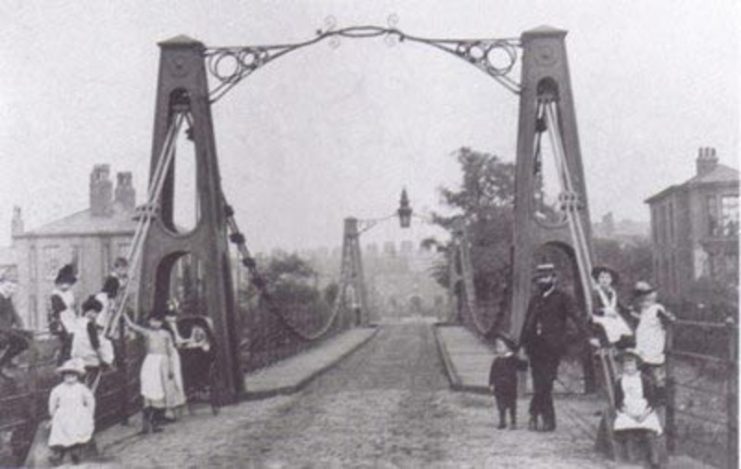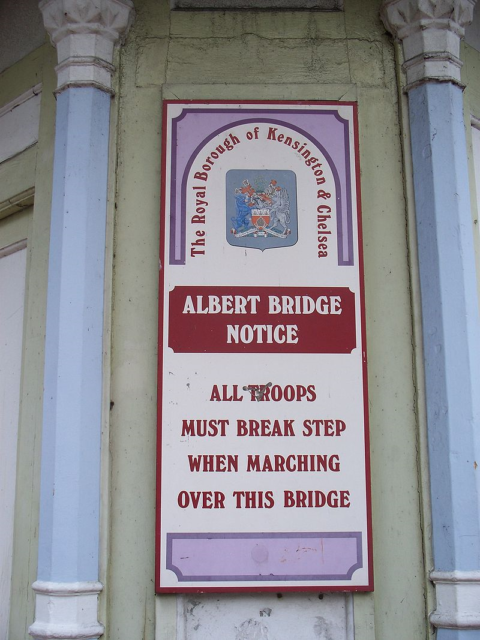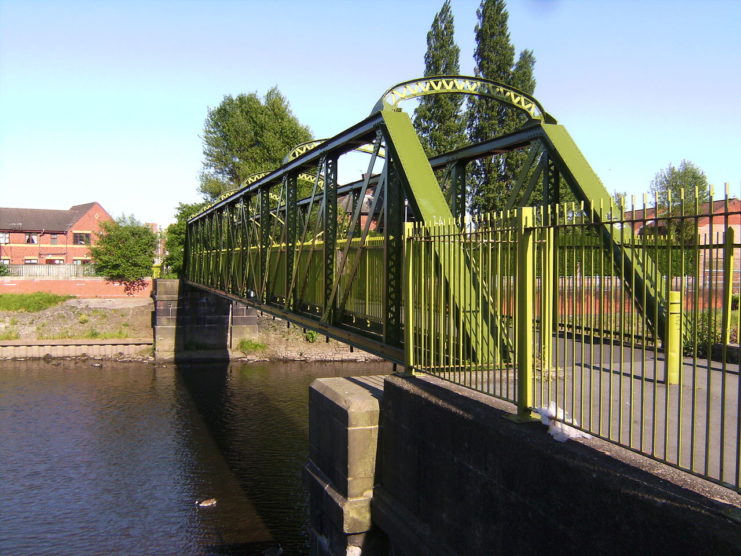In 1831 a suspension bridge in Greater Manchester, England, collapsed while British troops marched over it. The bridge had a few design flaws, but the marching of troops was discovered to be the reason for the collapse. After this incident, the British Army put out a new order that marching troops should “break step” when crossing a bridge.
Broughton Suspension Bridge
The Broughton Suspension Bridge was constructed in 1826 and crossed the River Irwell, between Broughton and Pendleton in Greater Manchester. The 44-meter chain link suspension bridge was financed solely by John Fitzgerald, the wealthy owner of the nearby Castle Irwell House. At the time the bridge was the only nearby crossing between Broughton and Pendleton and was a source of great local pride, thanks to its then-modern construction.
In 1831, four years after the bridge’s construction, soldiers from the British Army’s 60th Royal Rifle Corps were participating in an exercise on Kersal Moor. They were led by Lieutenant Percy Slingsby Fitzgerald, John Fitzgerald’s son and an MP.
When the 74 soldiers marched back, they crossed the suspension bridge, four abreast. As they marched, they noticed the bridge had begun to vibrate in time with their steps. They were not aware that they were inducing mechanical resonance within the bridge, which would lead to a catastrophic structural failure.
Mechanical resonance
All objects, even ones that appear solid and stationary, like buildings, walls, and bridges vibrate at various frequencies. If a force is applied to the object that matches its natural frequency, it will amplify its vibration. This phenomenon is called mechanical resonance and has caused a number of high-profile disasters.
The force applied to an object to cause mechanical resonance can vary. For example, the Tacoma Narrows Bridge experienced severe oscillations partly caused by wind-induced mechanical resonance. The bridge collapsed just a few months after it was built, and is one of the most famous examples of mechanical resonance.
London’s Millennium Bridge is another example, which experienced strong oscillations caused by the movement of people on the bridge. Luckily, the oscillations on this bridge were solved with dampers.
For the Broughton Suspension Bridge, the steps of the soldiers walking across the bridge matched its natural frequency, amplifying its vibrations by a noticeable amount.
Collapse

The troops found the vibrations amusing and even adjusted their step to amplify it further, unaware of the effect at play. The frequency of the vibrations increased until the bridge could no longer handle it, suffering a structural failure just before the first men reached the other side.
Later reports described sounds similar to gunshots, as one of the iron columns that supported the bridge’s chains collapsed. The rest of the bridge followed suit, falling away beneath the feet of the troops, around 40 of whom were tossed into the river below.
Thankfully the river was less than a meter deep at the time of the collapse and none of the soldiers were killed, although there were many injuries, including broken bones and head wounds.
After the collapse, an investigation discovered that one of the ground anchor bolts that supported the bridge’s stay chains had snapped. However, this ground anchor only relied on a single bolt, rather than two, and was found to have been poorly forged. The investigation concluded that because of this design flaw, the bridge was destined to collapse and that the marching just sped the process up.
After the collapse the British Army ordered marching troops to break step when crossing a bridge, to prevent another similar disaster from happening again.

As for the bridge? It was rebuilt, but it was still of poor quality. In 1924 a truss bridge replaced it, which is still used today. Here’s the new bridge as it currently stands:
